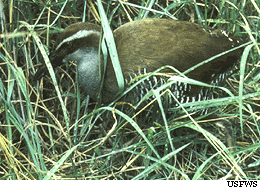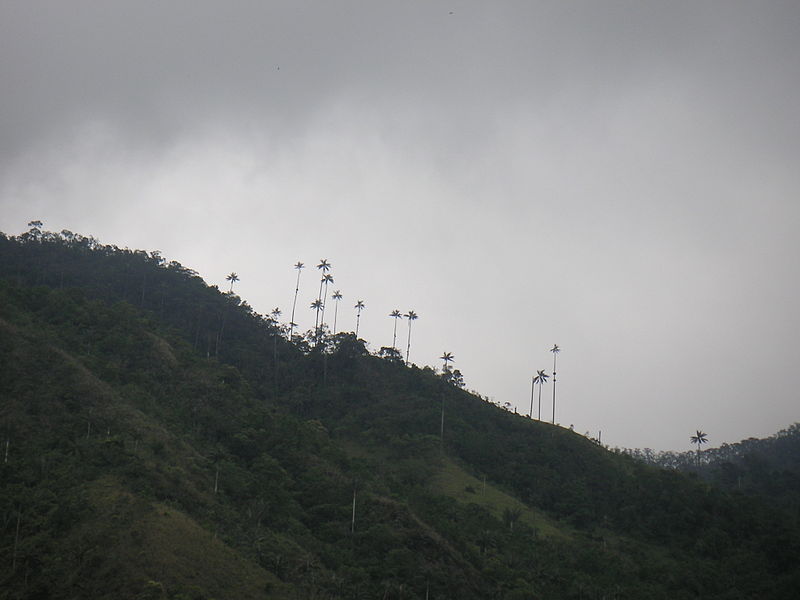 Attention to breeding birds in public and private collections, along with increased legal protection, has helped a great many species to recover from earlier population crashes. In some instances, rescue efforts represent the only hope for a species, as none survive in the wild. However, upon reviewing species status reports recently, I was dismayed to see that bad as opposed to good news prevailed. From well known pet trade parrots to recently described Asian swallows, wild birds everywhere face grave threats.
Attention to breeding birds in public and private collections, along with increased legal protection, has helped a great many species to recover from earlier population crashes. In some instances, rescue efforts represent the only hope for a species, as none survive in the wild. However, upon reviewing species status reports recently, I was dismayed to see that bad as opposed to good news prevailed. From well known pet trade parrots to recently described Asian swallows, wild birds everywhere face grave threats.
Following is a summary of recent trends:
Frightening Statistics
Of the world’s 9,685 described bird species, 1,227, or 12.4%, are included on the IUCN’s Red List as threatened with extinction. Of these, 192 species are considered to be critically endangered, and likely to become extinct in the near future. An additional 838 bird species are classified as “near threatened”.
Since the year 1500, 133 species of birds have become extinct. Currently, 4 species exist only in captivity, and 15 species have not been observed despite surveys and may be extinct as well.
Since the year 2000, at least I species, Hawaii’s po’ouli, has become extinct and at least 2 species – Spix’s macaw and the Hawaiian crow – have become extinct in the wild.
Regions and Habitats of Concern
 Indo-Malayan birds, Asian vultures and albatrosses face particularly hard times, with many species in severe decline.
Indo-Malayan birds, Asian vultures and albatrosses face particularly hard times, with many species in severe decline.
Brazil and Indonesia lead the world in the numbers of resident threatened species, with 123 and 114 respectively.
Eighty seven percent of all threatened birds reside in forests. Tropical and subtropical lowland forests support 43% of all such species; 36% reside in moist montane forests.
The Most Significant Threats
Converting land to agricultural use is seen as the most critical threat to bird life, with 73% of all species being significantly affected. Logging and trapping/hunting impact 71% of all birds and, along with agriculture, are the main reasons behind the decline of 95% of threatened species worldwide.
Introduced species of birds, mammals, invertebrates, reptiles and plants significantly affect one third of the world’s threatened bird species via predation, competition, habitat alteration or the spreading of disease.
Further Reading
You can read more about bird declines, the effect they may have and what can be done to help at http://www.biodiversityinfo.org/sowb/section.php?r=introduction.
 That Bird Blog – Bird Care and History for Pet Birds
That Bird Blog – Bird Care and History for Pet Birds

 Rare birds raised for use in future release/re-stocking programs present a unique set of challenges. Many are needed, and so pulling eggs to stimulate a second clutch is desirable. However, birds raised by hand or under foster parents of another species face poor prospects for survival in the wild.
Rare birds raised for use in future release/re-stocking programs present a unique set of challenges. Many are needed, and so pulling eggs to stimulate a second clutch is desirable. However, birds raised by hand or under foster parents of another species face poor prospects for survival in the wild. Captive-born female gorillas are often unable to raise their own young, lacking examples and mentors in the form of older females, as would be the case in the wild (some zoos have tried “training films, to no avail!). Hence many must be hand-raised (please see photo), but these too are often ostracized by other gorillas and rarely reproduce.
Captive-born female gorillas are often unable to raise their own young, lacking examples and mentors in the form of older females, as would be the case in the wild (some zoos have tried “training films, to no avail!). Hence many must be hand-raised (please see photo), but these too are often ostracized by other gorillas and rarely reproduce. However, rare finches raised by zebra or society finches often pick up the songs of their foster parents, and prefer the foster species over their own species as mates. As you can imagine, this seriously hampers efforts to increase the population of the endangered birds.
However, rare finches raised by zebra or society finches often pick up the songs of their foster parents, and prefer the foster species over their own species as mates. As you can imagine, this seriously hampers efforts to increase the population of the endangered birds. Ecuador’s yellow-eared parrot (Ognorhynchus icterotis) and golden-plumed parakeet (Leptosittacia branickii) face a most unusual threat – an annual religious celebration. The group Aves and Conservation has identified the collection of palm fronds for Catholic Easter celebrations as the main cause of the species’ near disappearance from Ecuador.
Ecuador’s yellow-eared parrot (Ognorhynchus icterotis) and golden-plumed parakeet (Leptosittacia branickii) face a most unusual threat – an annual religious celebration. The group Aves and Conservation has identified the collection of palm fronds for Catholic Easter celebrations as the main cause of the species’ near disappearance from Ecuador. You can read about recent golden-plumed parakeet nesting records at
You can read about recent golden-plumed parakeet nesting records at  Pairs of sibling finch chicks were used for the experiment. To simulate a stressful situation, one member of the pair was injected with corticosterone, a hormone produced by birds in response to stress; the other sibling was used as a control. As adults, the resting corticosterone level of the birds was identical. However, when subjected to a stressful situation, all previously-stressed chicks produced greater amounts of stress hormone than did their siblings, and their stress response lasted for a longer period of time.
Pairs of sibling finch chicks were used for the experiment. To simulate a stressful situation, one member of the pair was injected with corticosterone, a hormone produced by birds in response to stress; the other sibling was used as a control. As adults, the resting corticosterone level of the birds was identical. However, when subjected to a stressful situation, all previously-stressed chicks produced greater amounts of stress hormone than did their siblings, and their stress response lasted for a longer period of time.